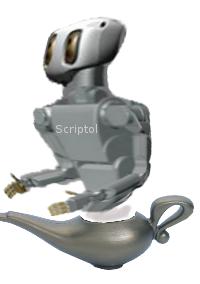From 3D printer to robot builder
The separation of the printer's head and its replacement by a robot is the way to create a fully automated manufacturing unit.

The combination of different technologies in robotics, printing, prosthetic, remote control, allows for a magical object: a machine that is presented an image and turns it into a real object, as big as it is, and even the size a home.
To better understand, remember what a 3D printer is and how it works.
- It operates from a picture, a model produced by 3D software. It has software that controls the print head to the course which transposes the drawing in the printing area. The principle is the same as a normal printer, but the height was added to the displacement axis X and Y and Z axis is added.
- It is filed with a plastic substrate, replacing the ink by a material allowing the overlay to add the Z-axis height. The printer scanning the surface actually transpose the image on the X axis and Y, then add as many layers as required by the given height of the drawing.
- How the material takes shape depends on the method chosen by the manufacturer, because there are several. You can use a liquid material that hardens as it dries or a polymer which is heated by laser to melt.
Objects created are confined in a volume where is moved the print head. To drop this restriction we need:
- That the print head is controlled remotely. This can be done by a protocol such as Wi-Fi or Bluetooth.
- It is in fact replaced by a machine which is able to move itself, arms to move the material, hands to pick and place. A humanoid robot can do all this.
- The material itself may be better suited to the construction of a large object. It can be made of bricks or other objects created themselves by a regular 3D printer.
- The change of granularity, the passage of the liquid material to the bricks does not really change how the software works, its basic action is always to move the vector (print head / robot) on a surface, to drop a construction unit at each point according to the coordinates from the original 3D design.
- At each point of construction, the software transfers the hand to the vector which has its own routines: the print head to deposit a micro-bead polymer, the robot to stack a brick and agglutinate with a solvent.
As we can see, the good genius out of the bottle that will transform our desires into reality is at hand. Already in the hands.

